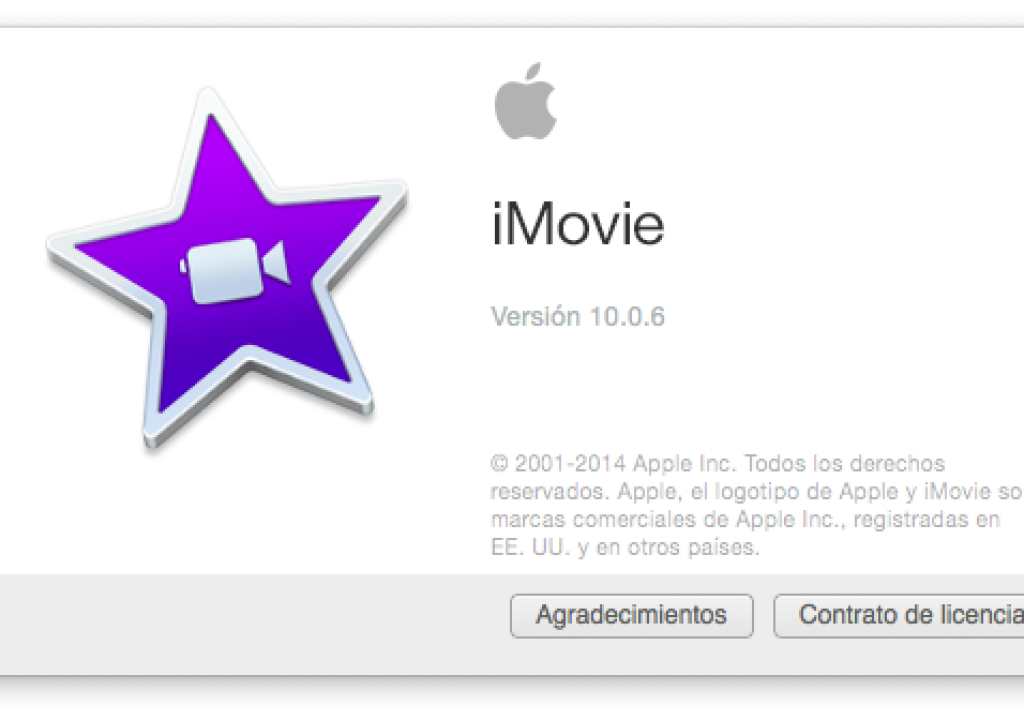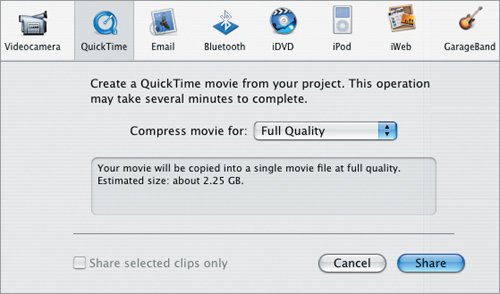Like any software company, Apple occasionally releases new versions of iMovie: version 6.0.1, version 6.0.2, and so on. Each free upgrade adds better reliability to the program. In general, they’re well worth installing. You don’t have to look far to find them. IMovie is the video editing software for the average Joe. Well, any average Joe that uses an Apple device. This is the go-to program for those who want to start editing their own videos. Like all Apple products, it is simple and functions easily across connected Apple libraries and devices.

Google the term iMovie and there are nearly three million hits. Almost twenty thousand of them are for iMovie 6.0.3 which was part of the 2006 edition of iLife suite. Although Apple no longer really supports it and has taken the download off its site, this free video editing software still has a large following. Apple's web site does still offer downloads of the updaters that will convert iMovie 6 to 6.0.1 - 6.0.2 and to 6.0.3 as well as a complete set of web tutorials for its usage.
One reason for the continuing popularly of iMovie 6 is that its successor, iMovie 8, was totally rewritten for ease of editing and transferring files to YouTube rather than for professional video editing. (see: iMovie 8 Revisited) Its open architecture also allows for customization and expansion with numerous plugins and additions.
This is a 'Quick and Easy' tutorial for producing video using Apple's iMovie 6.0.3 - 6.0.4 software. This is not meant to be nor is it an all-inclusive, step-by-step, do and know everything tutorial, for that I suggest 'iMovie 6 & iDVD:the Missing Manual' by David Pogue, 'iMovie 6 for the Macintosh:Visual Quickstart Guide' by Jeff Carlson or 'Making iMovies' by Scott Smith. For some advanced techniques, although it is becoming dated, try 'iMovie 3 Solutions:Tips, Tricks & Special Effects' by Erica Sadum.

1• Connect the camcorder to a Mac computer. Mac computers are compatible with Fire Wire 400 (IEEE1394), Fire Wire 800 and USB connections. The newest Mac computers have only a 9 pin 800 Fire Wire connection. A new cable with 800 Fire Wire on one end and a 400 Fire Wire on the other end will solve any connection problems. Turn the camcorder on and launch iMovie. It should immediately detect the camera. If the 'Camera Connected' message doesn't appear in iMovie's monitor window there may be a problem with either the connection mode or the video file format (see: Converting Video for iMovie) .
2• Importing clips from a camcorder is simple because iMovie actually controls and operates the video camera and displays the contents of the video in monitor window. The 'Play' button is at the bottom center of the monitor window. Press it, and the digital video camcorder starts playing. Press the import button to 'capture' (a term used for transferring digital material from the camera to the computer hard drive). To stop, click the Import button again. Each time that you push the import button a new piece of video is captured and a new large thumbnail (showing the first frame from the imported clip) is added to the 'Clip Shelf.' The drag-and-drop method often works. If materials are on the computer hard drive, simply drag them to an open window on the shelf.
3• The shelf area is used to store clips. To preview any of these clips, click a thumbnail, and press the Play button. To delete any unwanted clips, click-and-drag the thumbnail into the Trash Can which appears below and to the right of the Clip Shelf or click and press the delete button. Clip remains in the trash until it is Emptied. To empty the trash go the Edit menu-Empty Trash. Rapidly delete those unwanted clips because they still occupy hard drive space. Emptying the trash of unused clips will 'free-up' much needed extra hard drive space. To better organize the project, double-click on the default name of any clip (iMovie entitles them Clip 01, Clip 02, etc.) and rename each clip with a more descriptive title.
4• Continue capturing clips until all the wanted video materials appear in the Shelf. It is time to begin the edit by moving and arranging the material in the Clip Viewer (the area below the monitor window). Click on any thumbnail (the clip frame turns color) and drag-and-drop it onto the Clip Viewer. The thumbnail will now appear in the Clip Viewer window and is removed from the Shelf area. It may be returned to the Clip Shelf at any time.
5• Now it time to start production. Rearrange the clips by the Click-and-drag method until they appear in viewing order. To preview in the Clip Viewer at any time, press the Play button and the present arrangement will play in the Monitor window. The clips will play one after another without breaks. To lengthen any clip, delete it and re-import a longer clip from the camcorder. To shorten any clip, click the thumbnail in the Clip Viewer. It will appear in the Monitor window. Notice the two small triangles on the left just below the monitor window. Move each cropping marker to include the shorter material. Chose Edit-Crop. The clip is shortened. If there is a need to cut within a clip, place the play head at the approximate place and choose Edit-Split Clip at Play Head.
6• Once the clips are arranged in proper viewing order, the Button panel has all the tools to finish editing the video. The Clips button returns the right window to the Clip Shelf. The Themes button shows all themes which are available in iDvd. All of the materials created or saved in iPhoto, iTunes or GarageBand can be access with the Media button. The Edit button becomes one of the most important as you finalize the project with Titles, Transitions, and special effects for Video and Audio. The Chapters button is used to break the subject materials into smaller chunks for use with iDvd.

7• Transitions are added to the video from the Button palette. To access iMovie's built-in transitions click the Transitions button (under the Media button), and a selection of different transitions will appear in the box. Click-and-drag any effects icon between clips. It will render and ready for play back.

8• To insert a title, credits, or any other type of text into your iMovie project, click the Titles button under the Editing button. Select the titling mode and then set the various attributes: direction of entry, color, font, and size. Different title selections will have different available directions of entry. In the text entry area, type the desired text.
Another reason that iMovie 6 still has a tremendous following is because of its open architecture. This allows for the installation of plugins— small installable extras which add greater functionality or new effects to Titles, Transitions, Video FX and Audio FX. iMovie ‘08 was completely rewritten for easier editing and uploading to e-mail, YouTube, etc. iMovie 8 and 9 are not meant for professional editing capabilities and neither will accept plugins.
Imovie 6.0 Free Download For Mac
For more professional video projects that involve more than a small standard group of effects and transitions, many plugins are still available for iMovie 6. Many users edit with a feature rich iMovie 6 and then transfer the video to iMovie ‘08 and ‘09 to upload it to YouTube or e-mail.
Newer camcorders, with USB connection, as well as some of the newer file formats such as AVCHD are not supported by iMovie 6 so these files must be converted to be used. Roxio Toast 9 or 10 works well to convert these to usable resources.
Simply place the electronic files on the computer hard drive. Drag and drop the video files into the Toast window. Use the convert func
There were many tutorials on the Web but most have given way to apple's present iLife application—iMovie 9. Two of the better are at Apple Computer and the Atomic Learning Library.
Imovie 6.0 For Mac High Sierra
Although I have included many small instructional images within this page, there is an outstanding PDF of all the iMovie controls and their usage. It can be downloaded at iMovie 6 Tutorial. Download and print this file as a supplement to this tutorial.
Imovie Hd 6.0 Download For Mac

VHS and other older video tape devises may be used via an analog-to-DV converter such as the Dazzle Multimedia Hollywood DV-Bridge. There will be a tremendous loss in quality of the final video using analog. More importantly, iMovie 6.0.3 usually will not control the devise as it does with a DV camcorder making it difficult to control the video importing.